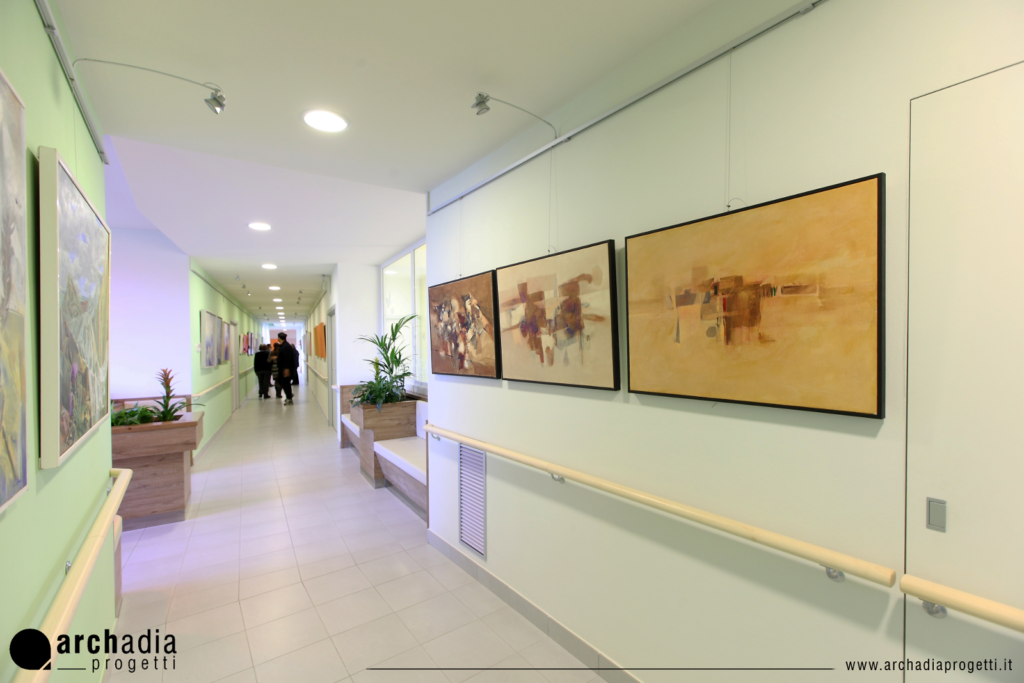During the 3rd day of the 25TH ALZHEIMER EUROPE CONFERENCE “DEMENTIA: PUTTING STRATEGIES AND RESEARCH INTO PRACTICE” we presented an innovative design approach to dementia facilities that can promote inclusion.
At the moment there is an invisible boundary that isolates dementia facilities from the community. Innovation in the design of facilities for people with dementia provides a way to support inclusion and to transform social behavior. Integrating specific semipublic spaces to host social functions and activities in Daily Centers and Nursing Homes, not closed to public use, generates changes in pattern of use, in flows, and in the identity of facility itself. Adopting this approach means opening dementia architecture to the community, making that boundary porous and permeable.
It is not by chance that we presented our approach in the session on Arts and Dementia; art can play an important role in supporting this approach and in the design of semipublic spaces. Art is a vehicle to connect those inside and outside dementia facilities because art is mainly perceived through emotive channels, and it is not always necessary to use purely cognitive functions. Art reaches all people, even if in different ways, regardless their physical or cognitive frailties.

We have applied this approach in the “Margherita” Daily Centre for Alzheimer disease in Fano (Italy), where we have designed and placed an art gallery in a wandering path. This permanent art gallery is called “Galleria D’Arte Margherita” and is open both to Day Center guests and to external visitors and the general public. The gallery accommodates in rotation artworks from professional painters and sculptors from the territory; the first exhibition was entitled “The dream and the memory” and hosted paintings and sculptures from 15 artists from Fano city.
The gallery is equipped with implicit devices to ensure peoples’ safety and layout features allow functional independence of the care facility from visitors; it is possible to isolate the three units from the art gallery, and to isolate the art gallery from external visitors. In addition, it is full of elements for sensory stimulation that guide people as they walk through: flowers and kitchen smells, birds songs, plants, colors, and paintings view.

This project is now an important resource from two points of view: on one hand, artists and community can use space in the Alzheimer Centre and, on the other hand, people affected from dementia benefit from the presence of artwork and visitors to the facility, with a global improvement of culture and social interaction.
Virginia Serrani, architect, PhD
University of Florence, Department of Architecture
Florence, Italy
Gianluca Darvo, architect, PhD st.
University of Florence, Department of Architecture
Florence, Italy




